What might the orbit of a primordial black hole going in and out of a Sun-like star look like?
Category: cosmology – Page 98
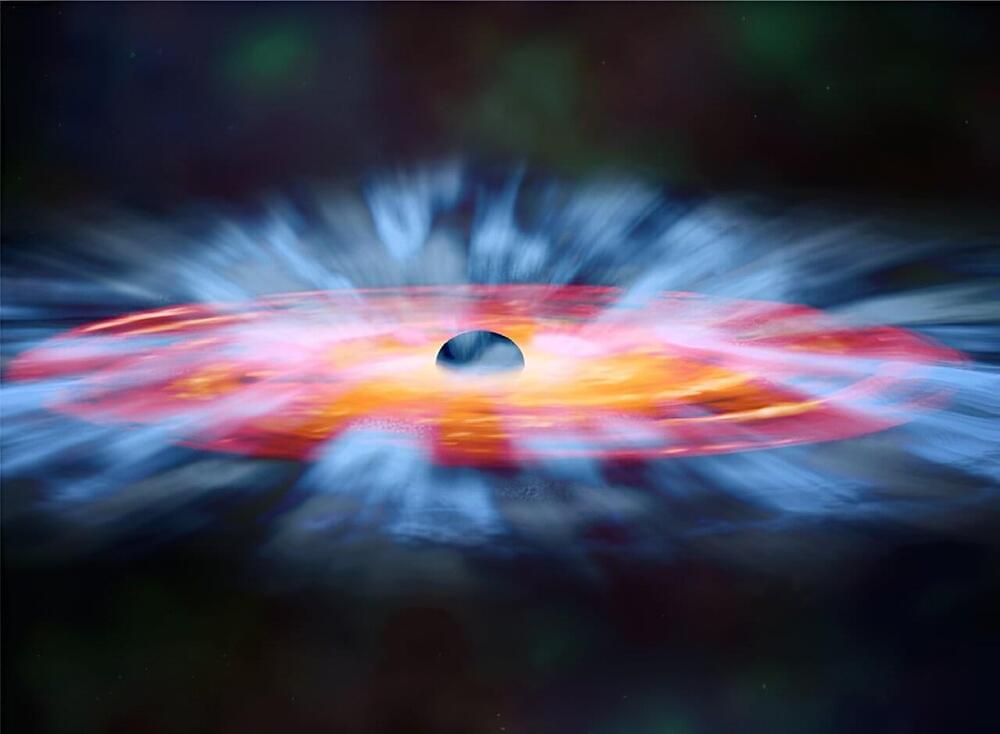
Wind from black holes may influence development of surrounding galaxies
Clouds of gas in a distant galaxy are being pushed faster and faster—at more than 10,000 miles per second—out among neighboring stars by blasts of radiation from the supermassive black hole at the galaxy’s center. It’s a discovery that helps illuminate the way active black holes can continuously shape their galaxies by spurring on or snuffing out the development of new stars.
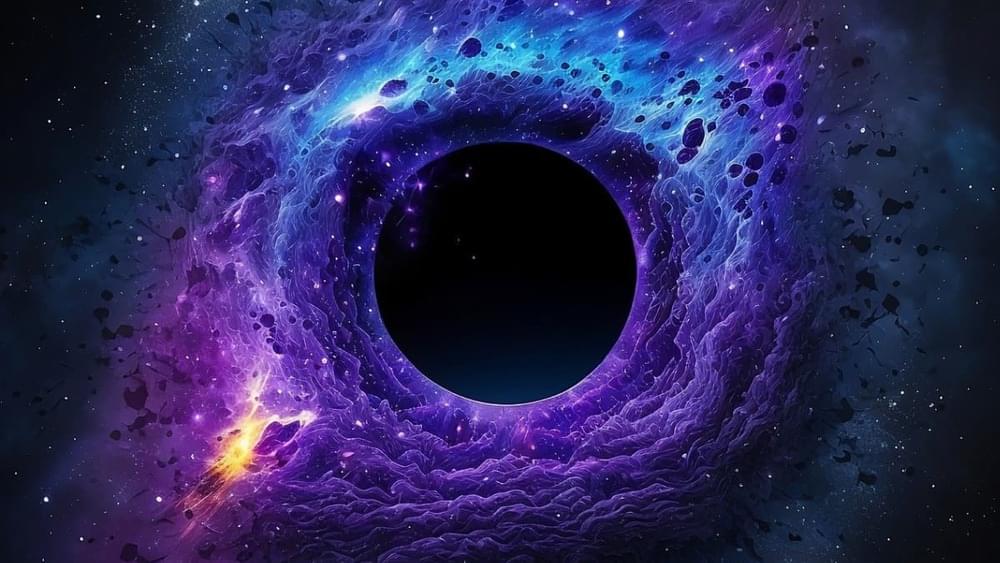
A rare black hole is lurking 6,000 light-years away in Earth’s cosmic backyard
Astronomers, with the help of the Hubble telescope, have now detected a rare intermediate-size black hole.
This black hole is hiding the Earth’s cosmic backyard at a distance of 6,000 light-years away within a globular star cluster.
The iconic Hubble Space Telescope has been used by astronomers to observe a compact region of space which has a mass of 800 Suns and is likely to be a black hole.
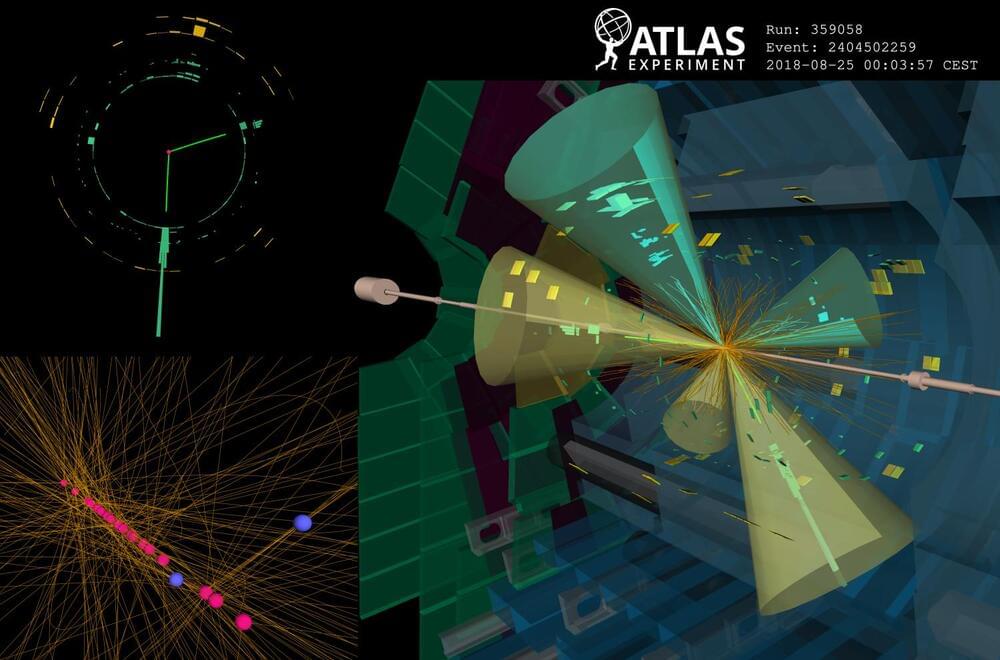
ATLAS chases long-lived particles with the Higgs boson
The Higgs boson has an extremely short lifespan, living for about 10–22 seconds before quickly decaying into other particles. For comparison, in that brief time, light can only travel about the width of a small atomic nucleus. Scientists study the Higgs boson by detecting its decay products in particle collisions at the Large Hadron Collider. But what if the Higgs boson could also decay into unexpected new particles that are long-lived? What if these particles can travel a few centimeters through the detector before they decay? These long-lived particles (LLPs) could shed light on some of the universe’s biggest mysteries, such as the reason matter prevailed over antimatter in the early universe and the nature of dark matter. Searching for LLPs is extremely challenging because they rarely interact with matter, making them difficult to observe in a particle detector. However, their unusual signatures provide exciting prospects for discovery. Unlike particles that leave a continuous track, LLPs result in noticeable displacements between their production and decay points within the detector. Identifying such a signature requires dedicated algorithms. In a new study submitted to Physical Review Letters, ATLAS scientists used a new algorithm to search for LLPs produced in the decay of Higgs bosons. Boosting sensitivity with a new algorithm Figure 1: A comparison of the radial distributions of reconstructed displaced vertices in a simulated long-lived particle (LLP) sample using the legacy and new (updated) track reconstruction configurations. The circular markers represent reconstructed vertices that are matched to LLP decay vertices and the dashed lines represent reconstructed vertices from background decay vertices (non-LLP). (Image: ATLAS Collaboration/CERN) Despite being critical to the LLP searches, dedicated reconstruction algorithms were previously so resource intensive that they could only be applied to less than 10% of all recorded ATLAS data. Recently, however, ATLAS scientists implemented a new “Large-Radius Tracking” algorithm (LRT), which significantly speeds up the reconstruction of charged particle trajectories in the ATLAS Inner Detector that do not point back to the primary proton-proton collision point, while drastically reducing backgrounds and random combinations of detector signals. The LRT algorithm is executed after the primary tracking iteration using exclusively the detector hits (energy deposits from charged particles recorded in individual detector elements) not already assigned to primary tracks. As a result, ATLAS saw an enormous increase in the efficiency of identifying LLP decays (see Figure 1). The new algorithm also improved CPU processing time more than tenfold compared to the legacy implementation, and the disk space usage per event was reduced by more than a factor of 50. These improvements enabled physicists to fully integrate the LRT algorithm into the standard ATLAS event reconstruction chain. Now, every recorded collision event can be scrutinized for the presence of new LLPs, greatly enhancing the discovery potential of such signatures. Physicists are searching for Higgs bosons decaying into new long-lived particles, which may leave a ‘displaced’ signature in the ATLAS detector. Exploring the dark with the Higgs boson Figure 2: Observed 95% confidence-limit on the decay of the Higgs boson to a pair of long-lived s particles that decay back to Standard-Model particles shown as a function of the mean proper decay length ( of the long-lived particle. The observed limits for the Higgs Portal model from the previous ATLAS search are shown with the dotted lines. (Image: ATLAS Collaboration/CERN) In their new result, ATLAS scientists employed the LRT algorithm to search for LLPs that decay hadronically, leaving a distinct signature of one or more hadronic “jets” of particles originating at a significantly displaced position from the proton–proton collision point (a displaced vertex). Physicists also focused on the Higgs “portal” model, in which the Higgs boson mediates interactions with dark-matter particles through its coupling to a neutral boson s, resulting in exotic decays of the Higgs boson to a pair of long-lived s particles that decay into Standard-Model particles. The ATLAS team studied collision events with unique characteristics consistent with the production of the Higgs boson. The background processes that mimic the LLP signature are complex and challenging to model. To achieve good discrimination between signal and background processes, ATLAS physicists used a machine learning algorithm trained to isolate events with jets arising from LLP decays. Complementary to this, a dedicated displaced vertex reconstruction algorithm was used to pinpoint the origin of hadronic jets originating from the decay of LLPs. This new search did not uncover any events featuring Higgs-boson decays to LLPs. It improves bounds on Higgs-boson decays to LLPs by a factor of 10 to 40 times compared to the previous search using the exact same dataset (see Figure 2)! For the first time at the LHC, bounds on exotic decays of the Higgs boson for low LLP masses (less than 16 GeV) have surpassed results for direct searches of exotic Higgs-boson decays to undetected states. About the event display: A 13 TeV collision event recorded by the ATLAS experiment containing two displaced decay vertices (blue circles) significantly displaced from the beam line showing “prompt” non displaced decay vertices (pink circles). The event characteristics are compatible with what would be expected if a Higgs boson is produced in association with a Z boson (decaying to two electrons indicated by green towers), and decayed into two LLPs (decaying into two b-quarks each). Tracks shown in yellow and jets are indicated by cones. The green and yellow blocks correspond to energy deposition in the electromagnetic and hadronic calorimeters, respectively. (Image: ATLAS Collaboration/CERN) Learn more Search for light long-lived particles in proton-proton collisions at 13 TeV using displaced vertices in the ATLAS inner detector (Submitted to PRL, arXiv:2403.15332, see figures) Performance of the reconstruction of large impact parameter tracks in the inner detector of ATLAS (Eur. Phys. J. C 83 (2023) 1,081, arXiv:2304.12867, see figures) Search for exotic decays of the Higgs boson into long-lived particles in proton-proton collisions at 13 TeV using displaced vertices in the ATLAS inner detector (JHEP 11 (2021) 229, arXiv:2107.06092, see figures)
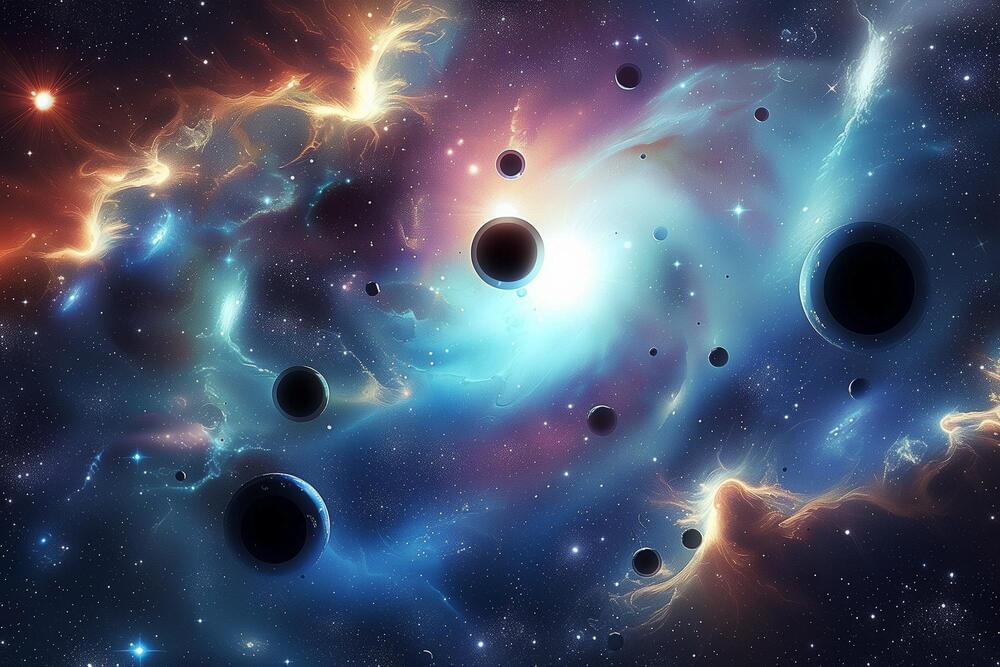
Quantum Theory Unveils Surprising Black Hole Shortage
Quantum field theory reveals potential flaws in models predicting numerous primordial black holes, suggesting fewer exist, which may impact theories of dark matter and the universe’s structure.
Researchers have applied the well-understood and highly verified quantum field theory, usually applied to the study of the very small, to a new target, the early universe. Their exploration led to the conclusion that there ought to be far fewer miniature black holes than most models suggest, though observations to confirm this should soon be possible. The specific kind of black hole in question could be a contender for dark matter.
The study, which was published recently in Physical Review Letters, was conducted by researchers at the Research Center for the Early Universe (RESCEU) and Kavli Institute for the Physics and Mathematics of the Universe (Kavli IPMU, WPI) at the University of Tokyo.
Beyond Einstein: Groundbreaking Map of the Universe Redefines Cosmic Models
The DESI collaboration is conducting a groundbreaking experiment to understand the universe’s expansion and acceleration. Their work with the DESI instrument has enabled them to map the cosmos from its early stages to the present, challenging existing models of the universe. Initial findings suggest there may be more to discover about dark energy and cosmic acceleration. The project’s innovative approach, including a fully blinded analysis, ensures that their conclusions are based on unbiased data, paving the way for future discoveries in astrophysics. Credit: SciTechDaily.com.
The DESI collaboration is examining the universe’s accelerating expansion through comprehensive mapping from its early stages to the present. Their findings challenge traditional cosmic models and suggest new insights into dark energy, all while utilizing groundbreaking, unbiased research methods.
A team of researchers, including an astrophysicist from The University of Texas at Dallas, as part of the Dark Energy Spectroscopic Instrument (DESI) collaboration, is leading a groundbreaking experiment aimed at exploring the universe’s expansion and acceleration.

Microscopic black holes may explain all dark matter in the universe
In the vast expanse of the cosmos, there is much more than meets the eye. For every kilogram of visible matter in the universe, from the computer on your desk to the distant stars and galaxies, there are 5 kilograms of invisible “dark matter” that permeate our surroundings.
This enigmatic dark matter evades direct observation yet exerts its invisible pull on the visible objects around us.
Fifty years ago, renowned physicist Stephen Hawking proposed a fascinating idea about the nature of dark matter. He suggested that it might consist of a population of black holes that formed in the early stages of the universe, mere moments after the Big Bang.
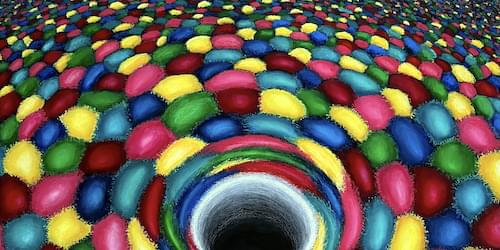
Colorful Primordial Black Holes
Primordial black holes (PBHs)—hypothetical objects formed by the gravitational collapse of dense regions in the early Universe—have been invoked as dark-matter candidates. But for PBHs to constitute all dark matter, they’d have to be extremely light, possibly weighing less than small asteroids. Now Elba Alonso-Monsalve and David Kaiser of the Massachusetts Institute of Technology show that these diminutive PBHs could possess an exotic property—a net color charge (such a charge characterizes quarks and gluons in quantum chromodynamics theory) [1]. Such color-charged PBHs might have left potentially observable signatures, says Kaiser.
Observations rule out that stellar-mass PBHs could fully explain dark matter, but PBHs weighing between 1017 and 1022 g remain viable candidates. Since a PBH’s mass should relate to its age, this mass range corresponds to PBH formation immediately after the big bang, when the Universe was still a hot plasma of unconfined quarks and gluons. Most PBHs would have formed by engulfing large numbers of quarks and gluons having a distribution of color charges. These PBHs would be color-charge neutral and sufficiently massive to live until today. However, the duo’s calculations show that a few PBHs could have formed from regions so tiny that the charges of the absorbed gluons would be correlated, giving these PBHs a net charge.
Color-charged black holes have long been considered to be mathematically possible, but the new study is the first to propose a realistic formation mechanism, says Kaiser. The small sizes imply that they would have since evaporated. Yet their presence in the early Universe might have disrupted the distribution of protons and neutrons when the big bang created the first nuclear isotopes, leaving subtle traces in the cosmic abundance of the elements.
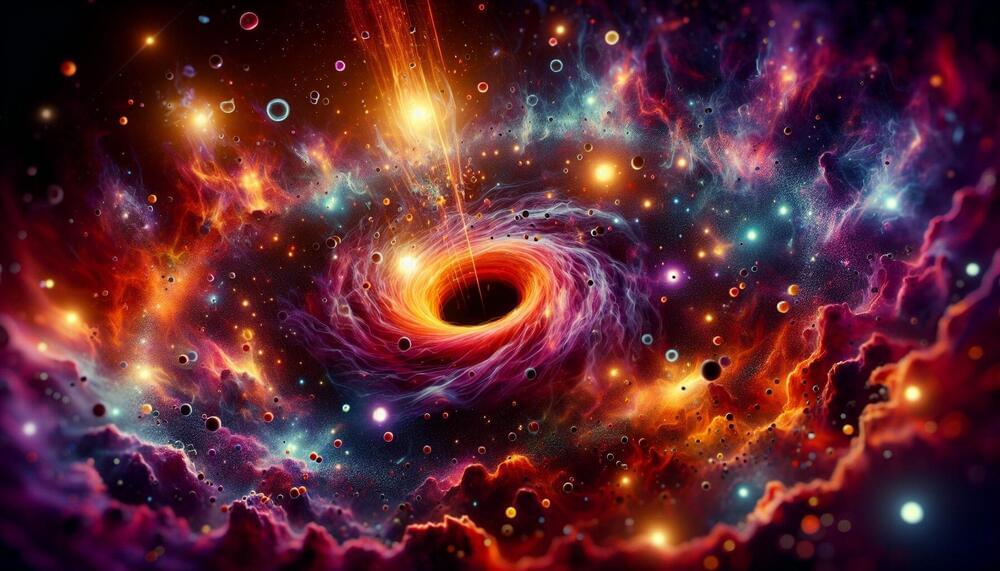
Exotic black holes could be a byproduct of dark matter
For every kilogram of matter that we can see—from the computer on your desk to distant stars and galaxies—there are 5 kilograms of invisible matter that suffuse our surroundings. This “dark matter” is a mysterious entity that evades all forms of direct observation yet makes its presence felt through its invisible pull on visible objects.
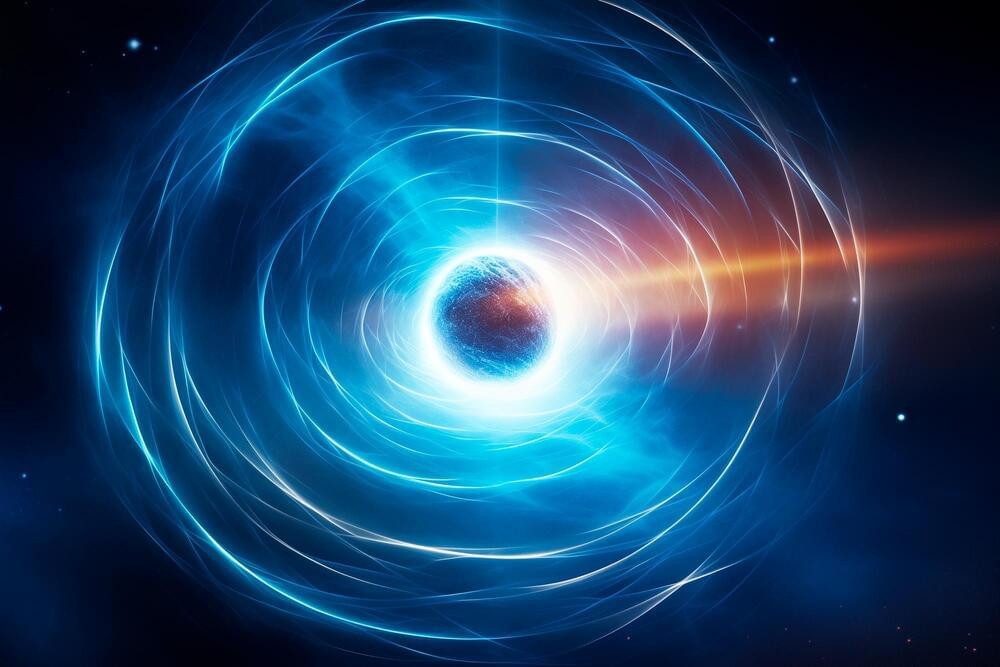
First Detection of Magnetism in Massive Stars Beyond Our Galaxy
New findings reveal magnetic fields in three massive stars in the Magellanic Clouds, shedding light on the influence of magnetism on stellar evolution and the formation of neutron stars and black holes. The use of advanced spectropolarimetry techniques was crucial to overcome past observational challenges.
Magnetic fields have been discovered in three massive, hot stars within our neighboring galaxies, the Large and Small Magellanic Clouds, for the first time. Although magnetic fields in massive stars are not new to our own galaxy, their detection in the Magellanic Clouds is particularly significant due to the abundance of young, massive stars in these galaxies. This discovery offers a rare chance to investigate actively forming stars and explore the maximum mass a star can achieve while maintaining stability.
Impact of magnetism on star evolution.